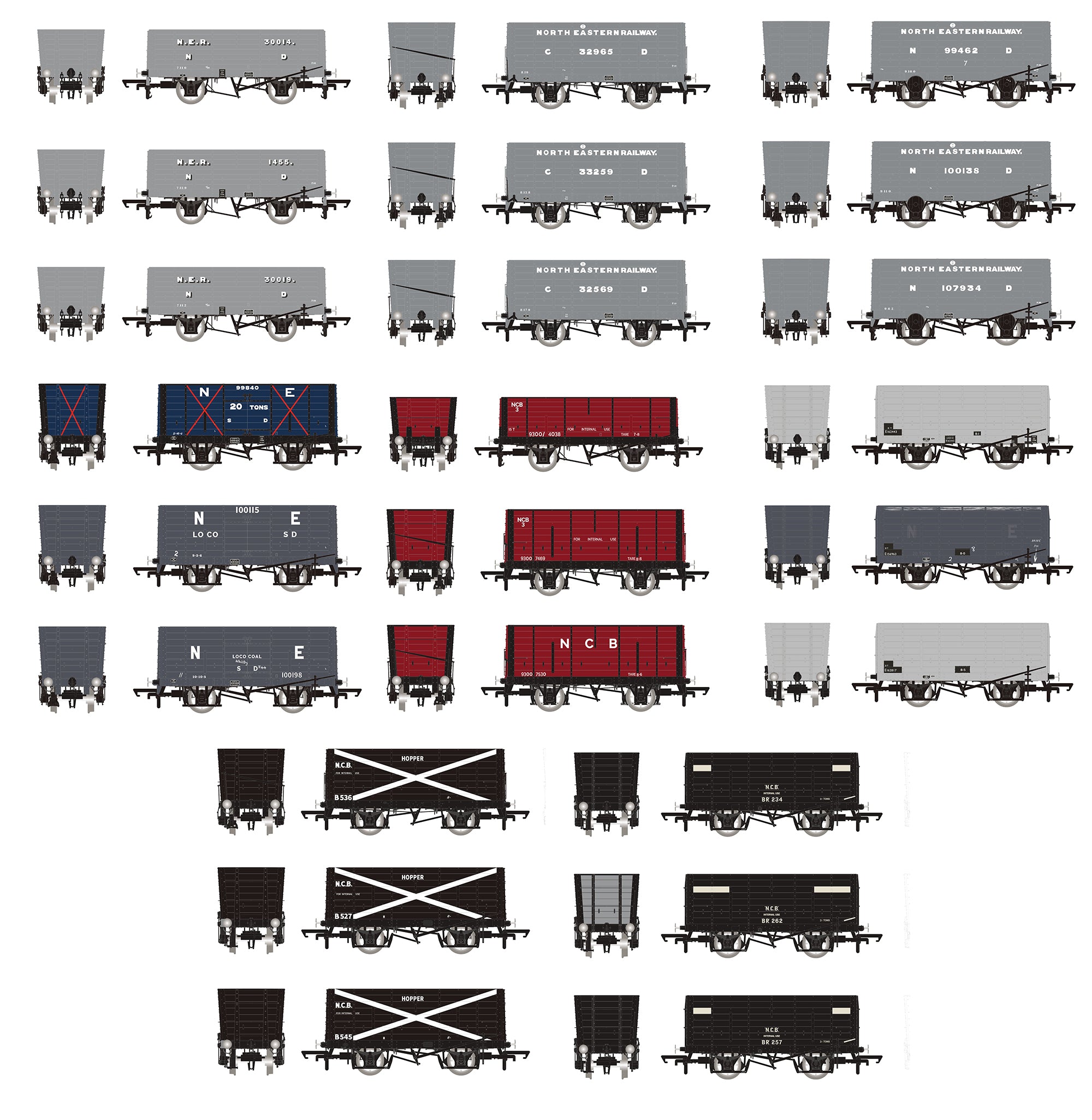Accurascale Hop To It With NER 20t Coal Wagons in OO/4mm
Accurascale today announces the family of NER 4 wheeled hoppers as the latest addition to their “Powering Britain” line of OO/4mm coal wagons. This family is made up of the P6, P7, P8 and Q3 variants of these distinctive 20 ton hopper wagons.
Eight Triple Packs Are Available To Pre-Order Now
£84.95 each with FREE UK Postage
ORDER HERE
The Models
A long time missing link in Ready-to-Run models in 00/4mm, the NER 20t hoppers were identified as a pivotal chapter in Accurascale’s famous “Powering Britain” range, telling the story of the movement of coal by rail through the ages. Work began on these models with surveys in mid-February 2021, at a time when the country was once more under severe Covid restrictions, and the only people on site at Beamish were contractors and skeleton operational staff. Normally a bustling, vibrant location, the P7 wagons were surveyed at Rowley Station with just birdsong to interrupt the silence, while Buzzards circled above and Deer grazed on the Events Field and Parkfield. Certainly an experience that will surely (and hopefully) never be repeated, but one that was carried out adhering to all protocols and safety guidelines.
This range of NER Hopper wagons, completely new to the RTR 00 market, bridge the gap between the use of small Victorian, wooden planked waggons, like Accurascale’s existing Chaldron waggons, and the arrival of the much improved steel bodied hoppers for the transportation of coal and coke in Northern England and the Borders. As such, they represent an important period of modernisation for mineral wagons as the railway companies evolved their designs from the Victorian era, and fully deserve their place in Accurascale’s “Powering Britain” range of models depicting the coal wagons which fuelled a nation by rail.
While it would’ve been simple to just offer one type of NER hopper, these wagons will instead see a complete range of variety, as another worthy subject is done “The Accurascale Way”. With four variants (P6, P7, P8 and Q3) in the line up, modellers will enjoy a wide range of variation over these important wagons. This will include modifications across their careers from NER service, through LNER and BR careers and onto their final days plying their trade in NCB collieries. A fully die cast chassis, separately applied wire handrails, brake gear, chains and more are also included where appropriate.
MODEL SPECIFICATION
- Die-cast metal chassis with plastic body. Target weight of 35g
- Scale length of 80mm over headstocks for all four types, 30.67 wide for P6 and 32mm for P7, P8 and Q3.
- Wheelbase of 42mm, allowing operation over a minimum radius of 371mm (1st radius set-track).
- Three different body designs, with tooling variations to cover the NER, LNER and Early BR periods, as well as NCB and Internal User patterns.
- Brake blocks fitted and aligned with wheels.
- Variety of axle journals catered for, depending on time period and usage pattern.
- Side and end handbrakes catered for.
- Split spoke wheels, to a blackened 00 Gauge RP25-110 profile, set in blackened brass bearings
- Eroded metal, plastic and wire detail parts, including (but not limited to) handrails, grab handles, side-door handles, lamp brackets, brake gear, draw gear and anti-friction gear.
- Accurate representation of internal body detail and hopper door detail.
- Turned metal sprung buffers.
- Wagons connected via small tension locks, set into small, self-centring NEM housings.
- Authentic livery, markings and numbers, accurate to time period modelled.




